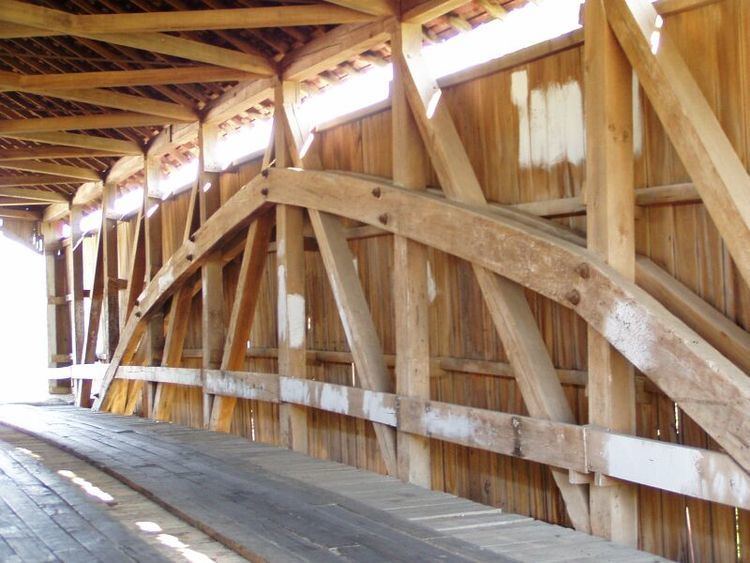Related Span range Short to medium | Descendant None Material Wood planks | |
 | ||
Carries Pedestrians, livestock, vehicles | ||
The Burr Arch Truss – or simply Burr Truss or Burr Arch – is a combination of an arch and a multiple kingpost truss design. It was invented in 1804 by Theodore Burr, patented on April 3, 1817, and used in bridges, usually covered bridges.
Contents
Design
The design principle behind the Burr arch truss is that the arch should be capable of bearing the entire load on the bridge while the truss keeps the bridge rigid. Even though the kingpost truss alone is capable of bearing a load, this was done because it is impossible to evenly balance a dynamic load crossing the bridge between the two parts. The opposite view is also held, based on computer models, that the truss performs the majority of the load bearing and the arch provides the stability. Either way, the combination of the arch and the truss provides a more stable bridge capable of supporting greater weight than either the arch or truss alone.
Gallery
Indiana has a large collection of Burr Truss bridges. Of its 92 extant bridges, 53 are Burr Trusses, many of which reside in Parke County.
